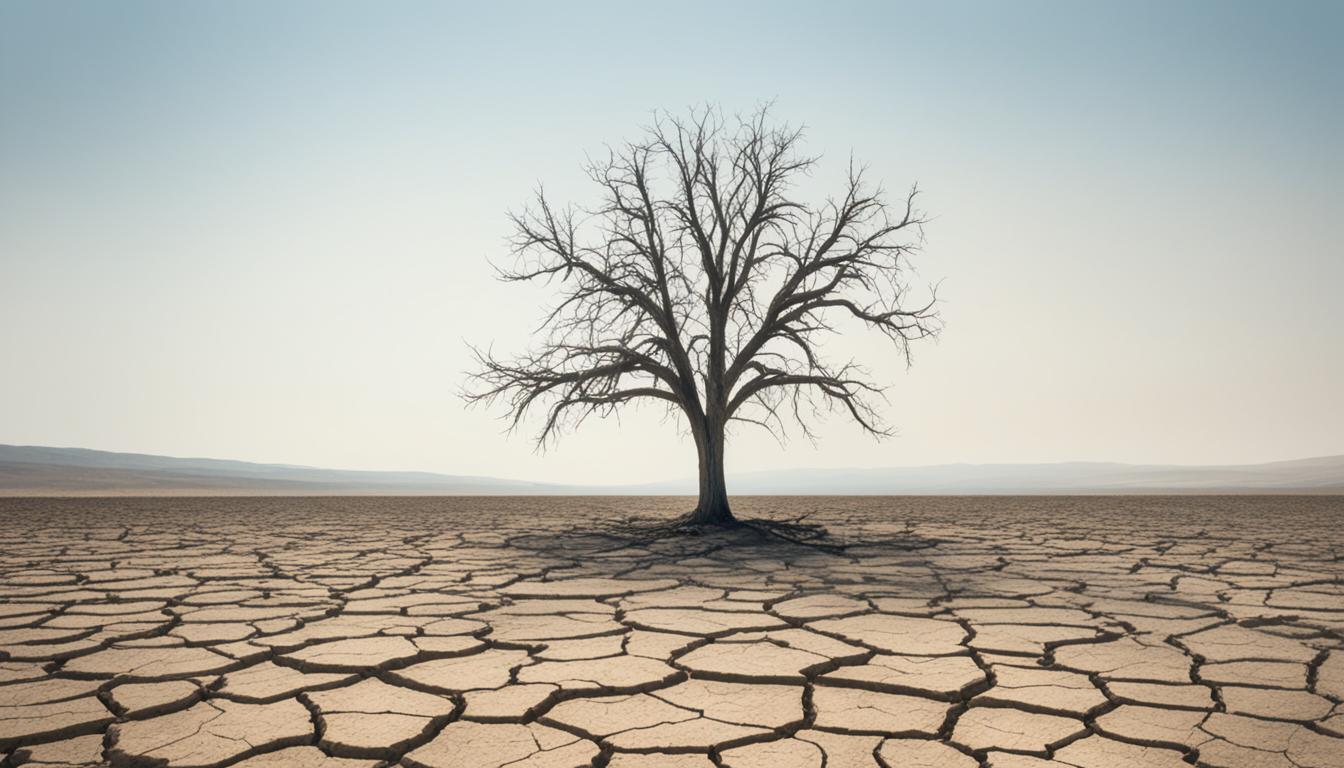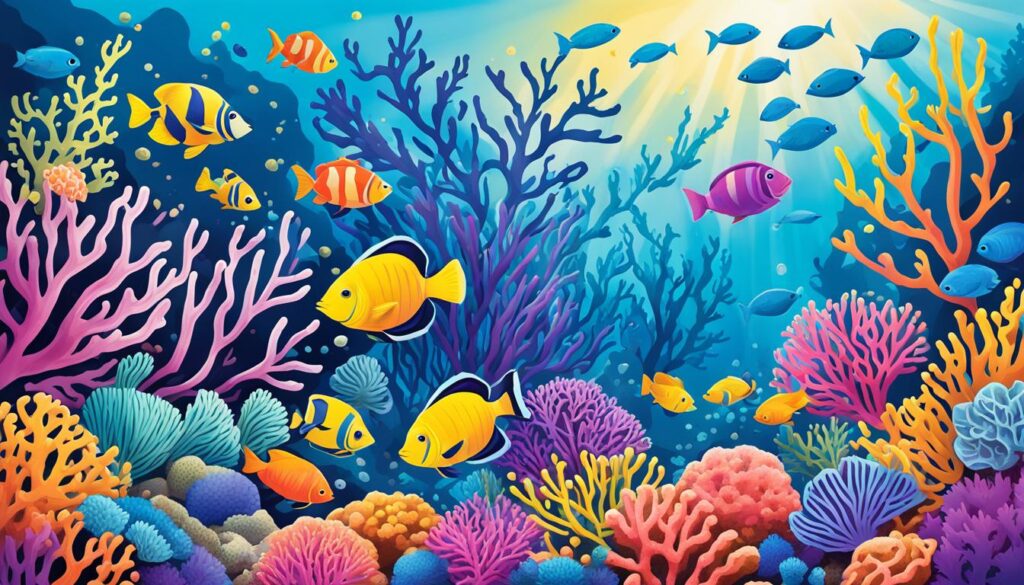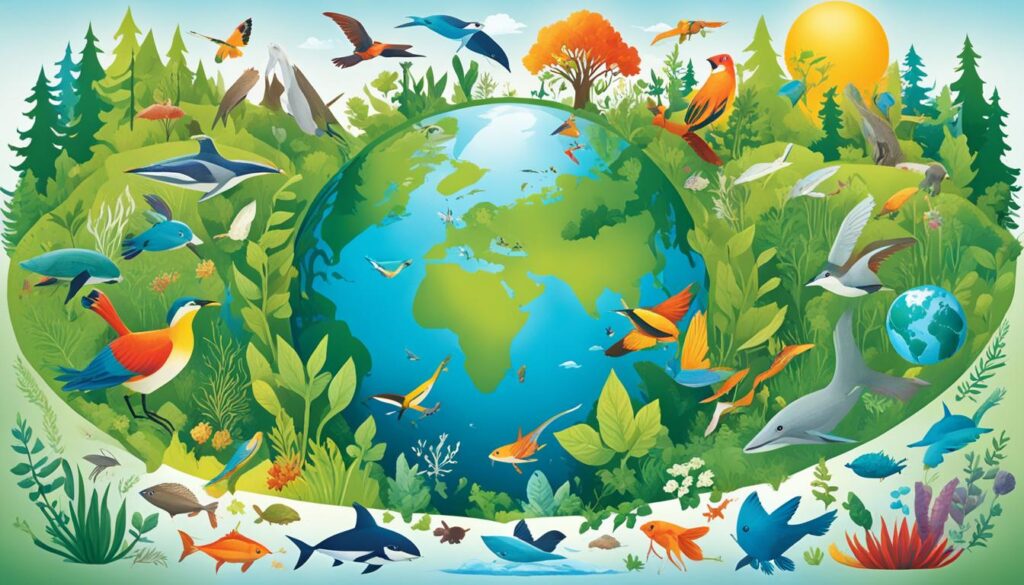Restore Our Planet: Combat Biodiversity Loss Now

Have you ever wondered about the consequences of biodiversity loss? How does it impact our ecosystems, species, and even our own lives? The alarming truth is that we are currently facing a global crisis of biodiversity loss, with devastating effects on the environment and our natural resources. But the good news is that there are conservation efforts underway to combat this loss and restore our planet’s incredible diversity of life. Join us as we explore the urgent need to address biodiversity loss and take action to preserve our planet’s precious ecosystems.
Key Takeaways:
- Biodiversity loss refers to the decreasing variety of life on Earth, including species extinction and habitat destruction.
- Human activities, such as habitat destruction and climate change, are the primary causes of biodiversity loss.
- Biodiversity loss has significant environmental and socio-economic impacts, affecting ecosystems, natural resources, and human well-being.
- Conservation efforts, including ecosystem restoration and the establishment of protected areas, play a crucial role in combating biodiversity loss.
- Addressing biodiversity loss is essential for preserving the planet’s ecosystems, promoting sustainable development, and ensuring a thriving future for all life on Earth.
The Impact of Biodiversity Loss on Climate Change
Biodiversity loss has a profound impact on climate change, shaping the delicate balance of our planet’s ecosystems. The intricate web of life, composed of diverse species and habitats, plays a critical role in regulating the Earth’s climate by acting as carbon sinks and mitigating the impact of greenhouse gases.
In particular, forests, peatlands, and ocean habitats like seagrasses and mangroves excel at absorbing and storing greenhouse gases, such as carbon dioxide. These natural spaces act as invaluable reservoirs, reducing emissions and curbing the effects of climate change.

However, the relentless forces of deforestation and habitat destruction pose significant challenges to our climate goals. The wanton destruction of forests releases vast amounts of stored carbon back into the atmosphere, amplifying the greenhouse effect and intensifying climate change. The rapid decline of coral reefs, fragile ecosystems bound together by intricate biodiversity, further exacerbates carbon emissions and jeopardizes the delicate balance of marine habitats.
To combat these threats and restore equilibrium, it is imperative that we prioritize the protection and restoration of these natural spaces. By safeguarding forests, implementing sustainable land use practices, and combatting deforestation, we can limit carbon emissions and slow the progression of climate change. Moreover, preserving and rehabilitating coral reefs is crucial, as they not only provide marine biodiversity hotspots, but also act as carbon sinks in our increasingly warming oceans.
Nature-based solutions are key in this fight against climate change and biodiversity loss. By harnessing the power of nature and implementing sustainable practices, we can create a future that thrives on the resilience of ecosystems. It is through these collective efforts that we can mitigate the effects of climate change, protect our planet’s fragile biodiversity, and secure a sustainable future for generations to come.
| Impact of Biodiversity Loss on Climate Change | Consequences |
|---|---|
| Deforestation | Release of stored carbon, increased emissions |
| Decline of coral reefs | Escalation of carbon emissions, loss of marine biodiversity |
| Protection and restoration of natural spaces | Limiting carbon emissions, mitigation of climate change |
| Nature-based solutions | Promotion of resilience and sustainability |
The Role of International Agreements in Addressing Biodiversity Loss
Recognizing the interlinkage between climate change and biodiversity loss, international agreements and frameworks have been established to address these global challenges. The UN Framework Convention on Climate Change (UNFCCC) and the UN Convention on Biological Diversity (CBD) aim to tackle climate change and biodiversity loss, respectively. In December 2022, governments reached an agreement on the Kunming-Montreal Global Biodiversity Framework, which sets ambitious targets and strategies to address the causes of biodiversity loss worldwide. The framework emphasizes the need for synergy with the Paris Agreement on climate change and other multilateral agreements to effectively combat the triple planetary crises. These international agreements provide the foundation for collective action to protect and restore biodiversity.
UN Framework Convention on Climate Change (UNFCCC)
The UN Framework Convention on Climate Change (UNFCCC) is an international environmental treaty aimed at reducing greenhouse gas emissions and mitigating the adverse effects of climate change. It was adopted in 1992 and has been ratified by almost all countries in the world. The UNFCCC provides a framework for international cooperation on climate change, including the development and implementation of national and global strategies to address climate change and its impacts.
UN Convention on Biological Diversity (CBD)
The UN Convention on Biological Diversity (CBD) is a legally binding treaty that aims to conserve biodiversity, ensure the sustainable use of its components, and promote the fair and equitable sharing of the benefits arising from the utilization of genetic resources. The CBD was adopted in 1992 and has been ratified by most countries. It emphasizes the importance of conserving ecosystems, species, and genetic diversity as fundamental to sustainable development.
Kunming-Montreal Global Biodiversity Framework
The Kunming-Montreal Global Biodiversity Framework is an agreement reached in December 2022 by governments worldwide. It builds upon the CBD and sets ambitious targets and strategies to address the causes of biodiversity loss and promote the restoration and conservation of ecosystems. The framework emphasizes the need for transformative action and targets, such as protecting at least 30% of the planet’s land and seas by 2030, and ensuring that conservation and restoration efforts are equitable and inclusive.
Paris Agreement
The Paris Agreement is an international treaty adopted in 2015 under the UNFCCC. Its goal is to limit global warming to well below 2 degrees Celsius above pre-industrial levels and pursue efforts to limit the temperature increase to 1.5 degrees Celsius. The Paris Agreement promotes international cooperation on climate change mitigation and adaptation, with countries committing to voluntary contributions and regularly reporting their progress. It is closely linked with the efforts to address biodiversity loss, as ecological systems and biodiversity play a critical role in climate change adaptation and mitigation.
| International Agreement | Objective |
|---|---|
| UN Framework Convention on Climate Change (UNFCCC) | Tackling climate change by reducing greenhouse gas emissions and mitigating its impacts |
| UN Convention on Biological Diversity (CBD) | Conserving biodiversity, ensuring sustainable use, and promoting equitable sharing of benefits |
| Kunming-Montreal Global Biodiversity Framework | Addressing the causes of biodiversity loss and promoting ecosystem restoration and conservation |
| Paris Agreement | Limiting global warming to well below 2 degrees Celsius and pursuing efforts for 1.5 degrees Celsius |
By aligning these international agreements and strengthening cooperation among nations, we can effectively combat biodiversity loss and mitigate climate change. These frameworks provide the basis for collaborative action, promoting the restoration and protection of ecosystems, and ensuring a sustainable future for our planet.

National and Global Efforts to Combat Biodiversity Loss
Nations and organizations worldwide are intensifying their efforts to combat biodiversity loss. With the recognition of the urgent need to protect and restore our planet’s ecosystems, various initiatives have been implemented to promote biodiversity conservation and address the drivers of biodiversity loss.
Ecosystem Restoration: Preserving Nature’s Balance
Ecosystem restoration stands as a crucial approach in the fight against biodiversity loss. It encompasses a range of strategies aimed at conserving, protecting, connecting, and restoring natural spaces to ensure healthy ecosystems and promote biodiversity. By restoring degraded areas, replanting forests, and creating wildlife corridors, we can create a more interconnected and resilient natural environment.
Ecosystem restoration not only helps to preserve and enhance biodiversity but also contributes to mitigating climate change and protecting vital ecological services. Through nature-based solutions, we can harness the power of nature to address environmental challenges while promoting sustainable development.

Protected Areas: Safeguarding Biodiversity Hotspots
Establishing and effectively managing protected areas is a key aspect of global conservation efforts. Protected areas serve as havens for vulnerable species and ecosystems, providing essential habitats for biodiversity to thrive. These areas are safeguarded from harmful human activities, ensuring the preservation of critical habitats and promoting species diversity.
Protected areas come in various forms, including national parks, wildlife sanctuaries, and marine reserves. When diligently managed and enforced, these areas conserve biodiversity and offer opportunities for scientific research, eco-tourism, and environmental education.
Combating Wildlife Trafficking: Protecting Species at Risk
Wildlife trafficking poses a significant threat to biodiversity, as it drives the illegal trade of endangered species and their parts. To combat this illicit trade, governments, organizations, and conservationists are working together to strengthen legislation, enhance law enforcement efforts, and raise public awareness about the detrimental impacts of wildlife trafficking.
By combating wildlife trafficking, we can protect endangered species from exploitation and preserve their role in maintaining ecological balance. It is imperative to address the root causes of wildlife trafficking, including poverty, weak governance, and consumer demand, to achieve long-term conservation success.
In summary, the collective actions taken at both national and global levels are vital in combating biodiversity loss. Through ecosystem restoration, the establishment of protected areas, and efforts to combat wildlife trafficking, we can work towards halting and reversing the decline of biodiversity. By prioritizing biodiversity conservation and embracing nature-based solutions, we can foster a sustainable future where wildlife thrives, ecosystems flourish, and the beauty of our natural world endures.
Conclusion
Addressing biodiversity loss requires a comprehensive and collaborative approach involving governments, organizations, and individuals worldwide. It is crucial to recognize the importance of global conservation efforts in preserving the diverse ecosystems that support life on Earth.
Sustainable development goes hand in hand with biodiversity conservation. By promoting responsible practices and mindful decision-making, we can ensure a harmonious balance between human needs and the preservation of our natural environment.
Nature-based solutions offer innovative ways to tackle the challenges of biodiversity loss. By harnessing the power of nature, we can restore and protect ecosystems, promoting environmental stability and enhancing resilience to climate change.
Together, we can make a difference. By taking action now, we can restore our planet’s biodiversity, ensuring a thriving future for all life on Earth. Let us join forces and become the guardians of our planet, working towards a sustainable world for present and future generations.






